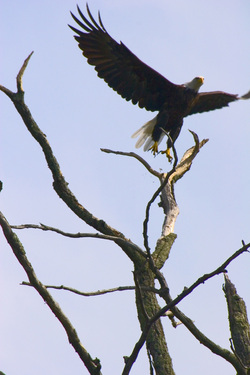Red Cliff Band of Lake Superior Chippewa

The Red Cliff Reservation was created through a series of treaties between the U.S. Government and the Red Cliff Band of Lake Superior Chippewa Indians (Red Cliff Band), the most recent being the treaty of 1854. The reservation is approximately one mile wide and 14 miles long, located at the top of the Bayfield Peninsula, on the shores of Lake Superior in northern Wisconsin. The village of Red Cliff, the location of tribal offices and businesses, is three miles north of Bayfield Wisconsin, a popular tourist community adjacent to the Apostle Islands National Lakeshore. The reservation population is 924, primarily Native American.
In 1854, the Commissioner of Indian Affairs arranged a treaty council in an attempt to get the Chippewa Indians to give up their titles to certain pieces of land on Lake Superior. Several Ojibwe chiefs responded to the call, and they convened in the town of La Pointe on Madeline Island, one of the 22 Apostle Islands in the Chequamegon Bay of Northern Wisconsin. Cheifs from all over traveled to this council, including Chief Buffalo.
Chief Buffalo was the "founder" of the Red Cliff reservation. So many supporters traveled with him to the treaty council, that in 1856 an executive order created a Reservation for his followers who had come for the council and decided to stay.
In 1854, the Commissioner of Indian Affairs arranged a treaty council in an attempt to get the Chippewa Indians to give up their titles to certain pieces of land on Lake Superior. Several Ojibwe chiefs responded to the call, and they convened in the town of La Pointe on Madeline Island, one of the 22 Apostle Islands in the Chequamegon Bay of Northern Wisconsin. Cheifs from all over traveled to this council, including Chief Buffalo.
Chief Buffalo was the "founder" of the Red Cliff reservation. So many supporters traveled with him to the treaty council, that in 1856 an executive order created a Reservation for his followers who had come for the council and decided to stay.